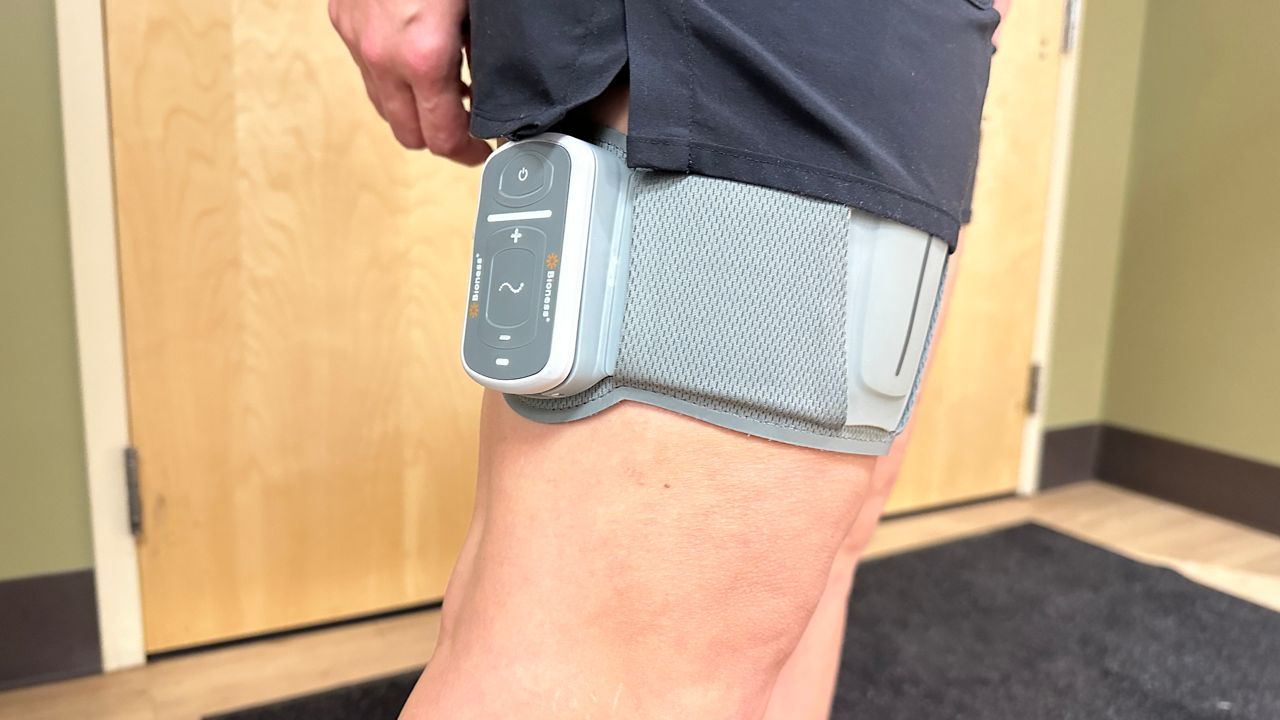LEXINGTON, Ky. — Anterior Cruciate Ligament (ACL) sprains or tears are one of the most common knee injuries, according to the American Academy of Orthopaedic Surgeons.
Geri Packwood, who is an advanced practice provider in the University of Kentucky’s HealthCare department, tore both of her ACLs and re-injured one of them, which made going about her normal day a challenge.
Packwood played sports as a kid and has always led an active lifestyle. She has passed this on to her own children who now play several sports.
“I like to try to meet them at the challenge and do whatever sport they’re doing with them,” said Packwood.
Packwood tore her left ACL in 2019 while playing basketball with her son. Two years later, she tore her right one playing some sports during a family vacation. While on the road to recovery, she re-injured her right knee. All three injuries required surgery and rehab.
After the last surgery, Packwood had developed Arthrogenic Muscle Inhibition (AMI). Her quadriceps muscle wasn’t functioning correctly, which caused the surrounding muscles to compensate. This led to her having pain.
“I think the big thing was that it kept me from doing what I wanted to do and that’s be active with my family, my kids and just being outside in my happy place,” said Packwood.
Packwood had difficulty sleeping and was using a ball chair for work.
Dr. Austin Stone, also at UK, started treating her in 2019. To deal with her quad muscle issues, they began using a Bioness functional electrical stimulation device. Dr. Stone says that it activates the correct muscle at the correct time to enable the body to restore normal functional pathways.
“The most exciting aspect of this device is the fact that you use it while you’re wearing [it during an] activity and that’s what really makes it special when you consider your approach to post-operative care,” said Dr. Stone. “You’re not isolated to the physical therapy place, you’re not isolated to the gym, but this can be incorporated in your recovery process throughout your normal working day.”

Dr. Stone has used the device on about 30 of his patients and says that he has seen a profound improvement among them in a short amount of time.
Within the first week of using the device, Packwood’s pain lessened, and she could sleep better at night. After about four to six weeks, the deficit on her right leg was lowered enough to get back to doing some of the physical activity that she couldn’t do before.
“I’m just grateful for the device and the rehab team here at UK and Dr. Stone, of course, who has put me back together on more than one occasion now to help keep me active,” said Packwood.
She is one of the first people in the U.S. to try this device.



